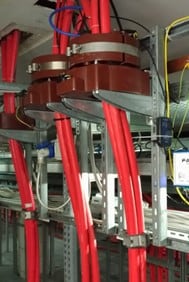Overview
This one day course will focus on solid dielectric cable, such as XLPE, but will encompass other designs (self-contained fluid-filled, PILC/MIND) that engineers may encounter in the field and may have to deal with during repairs or diversions. We will consider the vast variety of designs and the reasons behind some of these differences.
The course covers the beginning of the cable life cycle from manufacture to site acceptance testing. Focusing on modern solid dielectric cable we will consider the different stages in the manufacturing process and the quality control measures which should be in place in a well run factory. Different installation environments and laying methods, and the options for cable accessories. Finally we will consider the importance of the final commissioning test and the options employed at different voltage levels.
Learning Outcomes
Upon completion of this course, the participant will be able to:
- Identify the components of a complete cable system
- Understand the different types of AC cables installed in a modern electric power industry at medium, high, and extra high-voltage (up to 400 kV)
- Know the other types of AC cables that are in service and still need to be maintained
- Appreciate the manufacturing stages of XLPE cables and importance of quality control
- Know the different options for cable installation and some of the pros and cons of each
- Understand the different types of cable accessories used for solid dielectric MV to EHV cables
- Understand the advantages and disadvantages of different methods of commissioning solid dielectric cables for revealing installation defects.
Content
Key features of a generic cable circuit including:
- Cable & accessories
- Bonding
- Earthing
Different types of MV to EHV cable in the market today and historic cable types still in-service
Modern solid dielectric cables and performance
How solid dielectric cables are manufactured and factory tested
Different types of cable accessories
- Pros and cons of different types of joint
- Quality of installation and testing
Different methods of cable installation
- Cable environment and impact on performance
- Direct burial, troughs, ducts, tunnels etc.
- Cable pulling risks
The importance of cable commissioning
Cable commissioning methods: soak testing, withstand testing, VLF, damped AC, resonant testing

Title: Cable Basics – Cable Types, Production, Installation and Commissioning
Duration: One Day
For information on scheduling a course at your location or for other questions, please contact sales.


